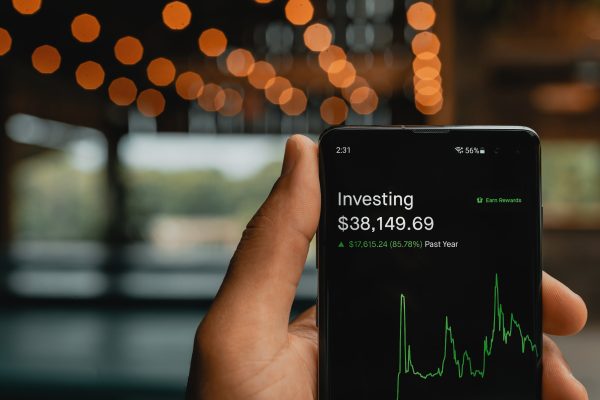
Stock Market Rally: What does it mean for your portfolio?
21 July 2023 6 min read
7 min read
Published:
Updated:

Ibrahim Khan
Co-founder
The Halal Investment comparison engine is alhamdulilah the first of its kind. The idea is it pulls together all the quality halal investment options that we find globally in one place – and then you can compare them against other like-for-like options.
In this guide we explain:
The IFG rating considers
In other words, we like products that are unambiguously sharia-compliant, do good for society and are competitive with the mainstream.
Let’s take each of those criteria in turn and give a bit more detail.
We typically only list investments that have a sharia board or a reputable Islamic scholar that has signed off on the product.
We will list some investments where they are unambiguously sharia-compliant without the requirement for an Islamic scholar certification. So, for example, if a mainstream company is selling property or gold without any interest involved, we will list that. We are of course Islamically-trained ourselves and have two muftis we work with closely within the IFG team – so rest assured that nothing unislamic will make it onto the comparison engine.
Where a product has sharia sign-off but is a product over which there is some debate in the industry, we will typically mark that product down. So for example products that use commodity murabaha products typically lose stars because of that – though any companies that are aiming to move away from that underlying structure to something less controversial, we will credit them for that. We appreciate that right now the commodity murabaha structure is the established market structure.
The sole reason why we left our corporate jobs and went full time on IFG is because we wanted to do stuff that has a direct real impact and a social good. So while we like people investing in stocks and property and getting a profit, we love people investing in stocks of companies that are based in Muslim countries and adding value to the Islamic economy or stocks of companies that are actively doing something to tackle climate change or property projects with a social housing element to them, or investment into Muslim startups trying to become the next big thing etc. So this element of the IFG rating rewards companies for that aspect of their business.
We like sharia-compliant investments that are on the same commercial terms as their mainstream equivalents. So if you are a roboadvisor or a fixed-income product, we would expect to see the same management fees and returns as a mainstream product as much as possible.
Of course we appreciate that Islamic markets are a subset of the main market and therefore there is less activity going on there and it’s a market still developing – so we don’t penalise companies too harshly on this metric. But if there is no obvious reason why the company is charging more than mainstream, we mark down. If however the company is young and still scaling up, we give it the benefit of doubt.
There are a few important screening tools you can use within the engine.
The investment strategy allows you to choose your risk-reward profile. Generally speaking the higher risk investments yield the highest returns and the lowest risk investments yield the lowest returns.
It really depends on:
If you click on the heart icon you can shortlist investments. Then if you click on the “show favourites” button you will be showed all the shortlisted options next to each other. The idea is you can compare whatever you like within the various investment strategies quickly.
One of the big stumbling blocks to investing is often the minimum investment amount. There’s nothing more annoying than getting excited about a product and then realising the minimum investment is £500,000!
So use this filter to set a parameter than you can meet and only see relevant investments.
All products are automatically sorted with the top rated products top. You can sort by the “IFG Rating” or by “Annual Return”.
A number of the investment products listed are not very liquid. This means they cannot be easily exited and sold off. These products often need an end-event at which point your entire initial investment plus the profits are returned to you.
Startup investing or property development projects are like this for example. You need to bear in mind liquidity when you invest – ask yourself “do I need to access this money in a certain amount of time?”
If the answer to that is yes, you need to understand
We have given a figure for projected annual return. How this is calculated depends on the type of asset. For example, if it’s a stock market fund, we’ll typically look at the last 3 years returns for that fund and calculate an annualised figure.
For things like startup investing, it’s much more difficult so we’ve used data from the governmental body NESTA’s detailed report on what the average angel investor will make when investing in UK startups. They found it was between 22-27% annualised return. This is not include the 30-50% tax break that UK investors get, which boosts the return further.
Remember two things though:
Remember, not all investments are the same. The high-risk investments contain some investments where you can end up losing a big chunk of, if not all, your money. These investments should only be made with a part of your portfolio you are happy to expose to that risk. Remember, for startup investing, you should typically aim to invest in a range of startups so that you build yourself a little portfolio of startups and spread your risk as typically about half of your portfolio will either completely or partially fail.
Your grandmother was right when she said don’t put all your eggs in one basket. Listen to her.
You would sensibly invest a chunk of your savings across all the different risk categories. This gives your portfolio protection that it won’t disappear overnight, it gives you liquidity in case you need to quickly liquidate an investment and get cash out, and it gives you a healthy exposure to the high-growth investments so that your portfolio has a strong growth element to it too.
We often have a tendency to give into our irrational selves and go for unsuitable and inappropriate investments and purchases. Thankfully, we have fully vetted the investment products on the comparison so you have that first layer of comfort. But what you shouldn’t do, is go and pile all your savings in the most high-return investment option without thinking of the repercussions.
Instead you should first look at our investment checklist and the Halal Investing for Busy Professionals Course to set up a proper strategy for yourself. Once you have that, you can dive in and start investing according to your plan.
Also, don’t expect to make a fast buck and get worried or upset at short-term market fluctuations. The best thing is to think long-term and invest long-term. In the long run the markets trend upwards and correct out the short-term noisiness.

21 July 2023 6 min read

15 February 2023 7 min read

10 January 2023 11 min read